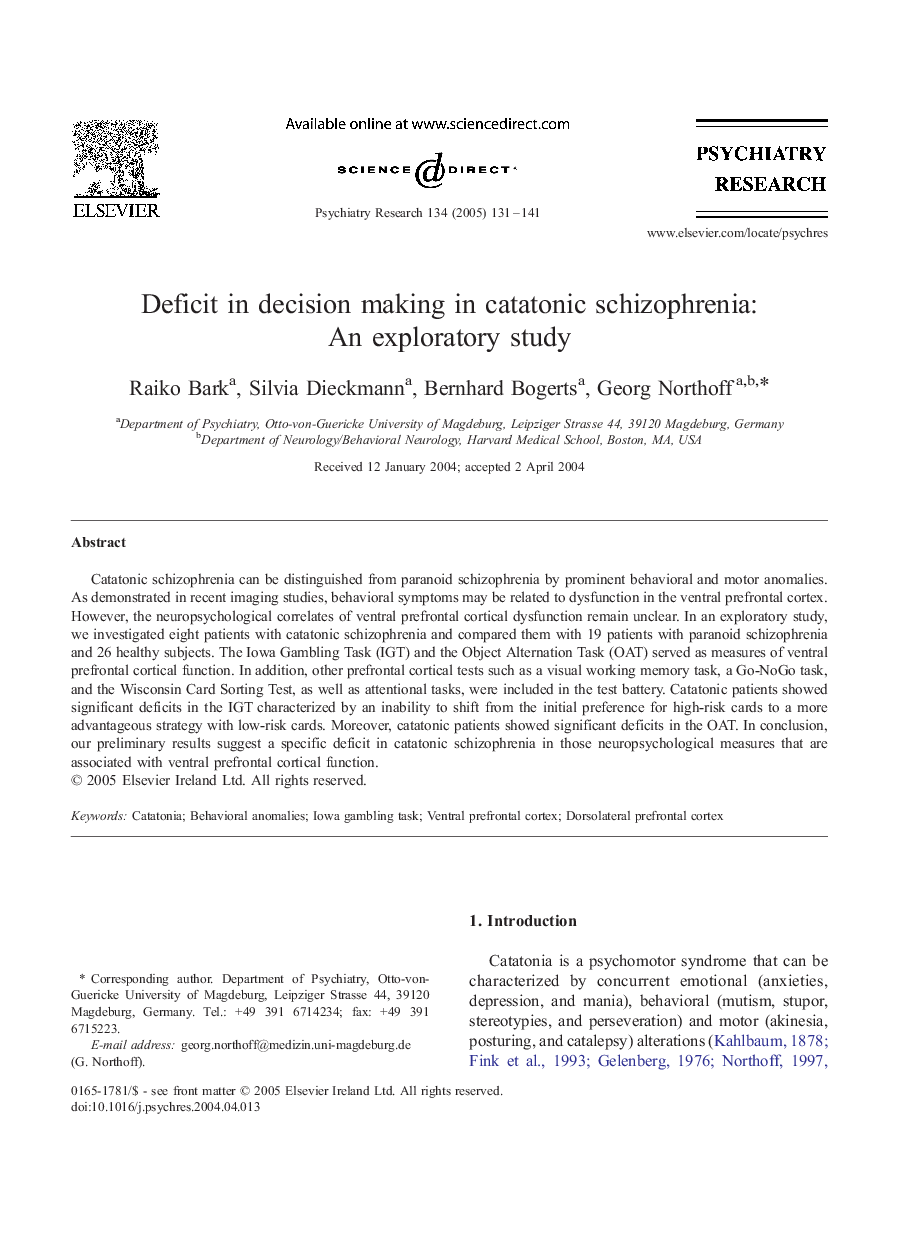| Article ID | Journal | Published Year | Pages | File Type |
|---|---|---|---|---|
| 10303449 | Psychiatry Research | 2005 | 11 Pages |
Abstract
Catatonic schizophrenia can be distinguished from paranoid schizophrenia by prominent behavioral and motor anomalies. As demonstrated in recent imaging studies, behavioral symptoms may be related to dysfunction in the ventral prefrontal cortex. However, the neuropsychological correlates of ventral prefrontal cortical dysfunction remain unclear. In an exploratory study, we investigated eight patients with catatonic schizophrenia and compared them with 19 patients with paranoid schizophrenia and 26 healthy subjects. The Iowa Gambling Task (IGT) and the Object Alternation Task (OAT) served as measures of ventral prefrontal cortical function. In addition, other prefrontal cortical tests such as a visual working memory task, a Go-NoGo task, and the Wisconsin Card Sorting Test, as well as attentional tasks, were included in the test battery. Catatonic patients showed significant deficits in the IGT characterized by an inability to shift from the initial preference for high-risk cards to a more advantageous strategy with low-risk cards. Moreover, catatonic patients showed significant deficits in the OAT. In conclusion, our preliminary results suggest a specific deficit in catatonic schizophrenia in those neuropsychological measures that are associated with ventral prefrontal cortical function.
Related Topics
Life Sciences
Neuroscience
Biological Psychiatry
Authors
Raiko Bark, Silvia Dieckmann, Bernhard Bogerts, Georg Northoff,
